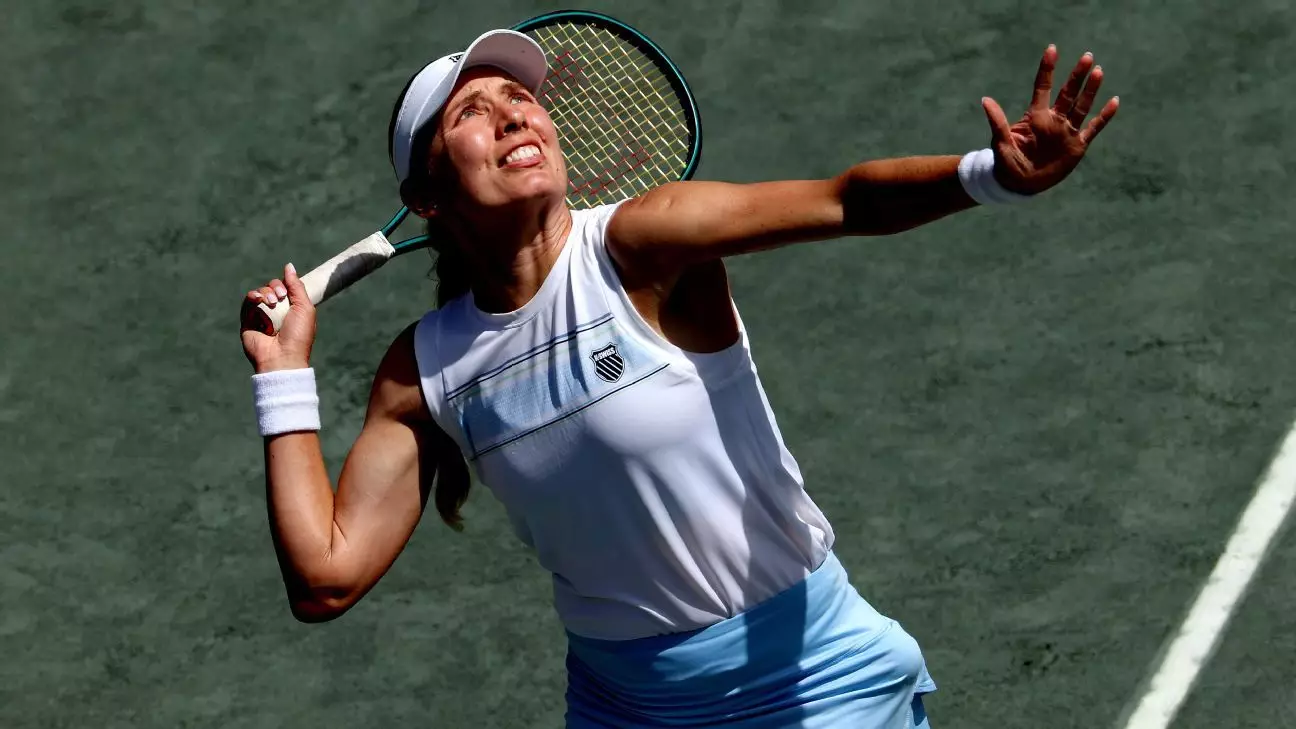The Charleston Open’s semifinals unfolded with all the thrills and unpredictability tennis fans crave. Top seed Jessica Pegula faced off against Ekaterina Alexandrova in a match that showcased not only their physical prowess but also their mental resilience. Pegula, who started the match seemingly unstoppable by winning the first five games, had to dig deep when Alexandrova staged a comeback. The match, ultimately decided in Pegula’s favor with a final score of 6-2, 2-6, 7-5, illustrated the unpredictable nature of sport—the momentum can shift in the blink of an eye.
While Pegula carved out an impressive lead, Alexandrova’s tenacity was promptly on display as she turned the tide in the second set. This was not merely a match of skill; it revealed how psychological fortitude can sway the outcome. In moments when it appeared Pegula had the upper hand, Alexandrova found ways to counteract her opponent’s strengths, showcasing the beauty of competitive sports. The audience was treated to a roller coaster of emotions as both players exchanged powerful shots, with Pegula sealing the match with a stunning backhand winner that highlighted her skill and determination.
A Test of Endurance
The two-hour and twenty-one-minute marathon was more than a series of games; it was a testament to both athletes’ conditioning and mental fortitude. It is easy to overlook the physical demands of tennis while focusing on the technical intricacies, but matches like this remind spectators of the endurance required at the professional level. Pegula’s ability to bounce back after losing a set illustrated her physical conditioning and mental resilience—qualities that are often as crucial as technical skills in determining the outcome of high-stakes matches.
Weather played an undeniable role in the contest. The windy conditions added an extra layer of challenge, turning routine shots into unpredictable arcs and forcing both players to continually adapt their strategies. Pegula’s own reflection on the match encapsulated this struggle perfectly. She noted the discomfort they both experienced, affirming that acknowledging external factors such as wind can often play into the larger narrative of a match. The wind’s chaotic influence transformed the contest from a display of pristine technique into something raw and real, where both athletes had to grapple with not just each other but the elements that challenged them.
Injury Interrupts the Other Semifinal
While Pegula’s triumph painted a vivid picture of resilience, the other semifinal, in which Sofia Kenin faced Amanda Anisimova, was marred by unfortunate circumstances. Anisimova, eager to build on her successful season, found her aspirations cut short due to injury. The eighth seed had previously broken a three-year title drought, and spectators were eager to see how she would continue her upward trajectory. Instead, Kenin, who marched forward after Anisimova’s retirement, found herself advancing to the final almost effortlessly, serving as a reminder that in sports, unpredictable turns can dampen even the most hopeful journeys.
Injuries are an ever-looming threat in competitive athletics, but witnessing a player unable to continue because of unforeseen complications adds a bittersweet note to the jubilations of winning. It’s a stark reminder that, for all the glory and achievement in sports, the toll on the body can sometimes obscure the path to greatness. Kenin will now get an opportunity to vie for the title, but one cannot help but feel the bittersweet nature of a final earned not just through skill but by circumstance as well.
A Historic American Showdown
With Pegula and Kenin set to face off, the Charleston Open offers fans a chance to witness an All-American final for the first time since 1990. This matchup is not just significant for the players but for American women’s tennis as a whole, serving as a celebration of the talent emerging from the nation. It’ll be a clash of style and strategy, with Pegula’s gritty determination lining up against Kenin’s fierce competitive spirit.
The anticipation surrounding the final is palpable, raising questions that swirl in the minds of fans: Who will claim the title? How will the players adapt to each other’s strengths and weaknesses? And beyond the result, how will this match impact American women’s tennis in shaping a promising future filled with potential champions? It is moments like this that enrich the narrative of the sport, bringing forth young athletes who rise, stumble, and rise again in their relentless pursuit of greatness.

